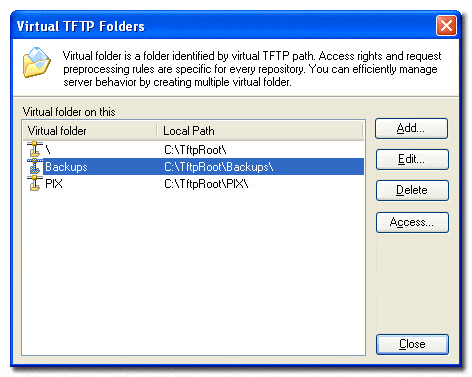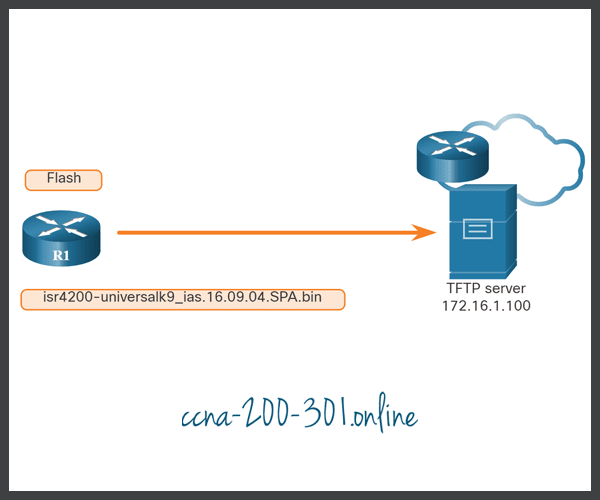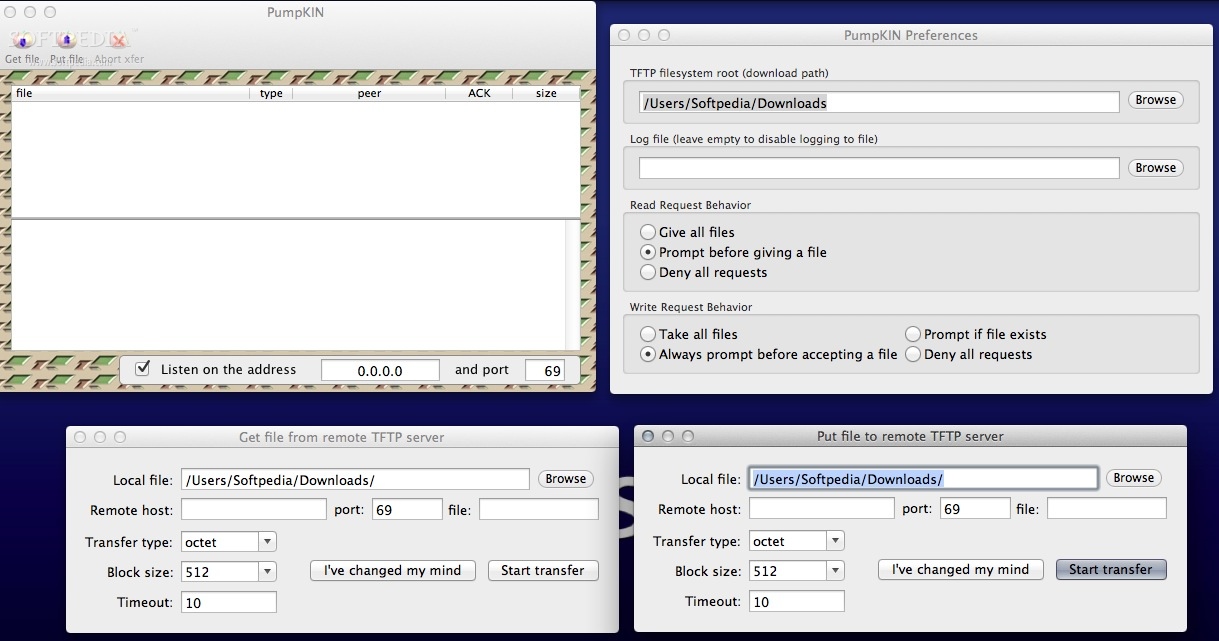

- #MAC TFTP CLIENT HOW TO#
- #MAC TFTP CLIENT FOR MAC#
- #MAC TFTP CLIENT MAC OS X#
- #MAC TFTP CLIENT INSTALL#
- #MAC TFTP CLIENT UPGRADE#
It would cost you nothing unless you're willing to monetarily express your gratitude and make a donation (yes, it means 'free' or 'freeware', just go and download it). You're free to torture it the way you want to as long as you preserve original author's credentials. Open source for those willing to add missing features, fix bugs and examine code for potential flaws and fun. Can run in background, taking up a 256 pixels of screen nicely packed as a 16x16 square in your notification tray area (windows only). #MAC TFTP CLIENT MAC OS X#
Originally developed for Windows 95, it reportedly runs on all Win32 platforms: Windows 98, Windows NT, ME, XP, now also ported to Mac OS X (so far only tested on Mountain Lion). Support for TFTP blocksize option allows transfer of large files if both TFTP server and client support it. Unlimited simultaneous transfers both for TFTP server and client. Fully standard-compliant TFTP file transfer. The default DD-WRT username/password is root/admin. After the 2 minutes do a Hard reset or 30/30/30 on the router, then configure at 192.168.1.1 (DD-WRT's default IP address). Wait for a full 2 minutes while the new firmware flash configures itself. Once it flashes and you receive the Success message. #MAC TFTP CLIENT UPGRADE#
Power cycle the router (or tap the reset button) then press Upgrade as soon as you get the first ping reply.

#MAC TFTP CLIENT FOR MAC#
This Amazon S3 client for Mac allows connecting and fully working with any remote server/cloud computing services as if you were managing a regular folder. I have had good luck flashing within the first 1/2 second of reapplying powering the device. ForkLift is a two-pane file manager and file transfer client for macOS with built-in support for FTP, Amazon S3, WebDav, and SFTP developed by BinaryNights.
If the router does not flash immediately stop the attempts and vary the timing from when you plug the unit in to the time you hit the start button. Unplug the router, plug it back in, and immediately hit the Upgrade button on the TFTP utility. Now plug the ethernet cable from your computer into a LAN port of the router. Navigate and select the firmware you wish to flash. The Server/IP address is that of the router being flashed. Set your computer hardware adapter to a static IP address within the same subnet as the router's original firmware (ex.set a static of 192.168.11.10 if your router's default IP address is 192.168.11.1). Here are the setup and use instructions for the TFTP utility.Both the Linksys original and a Linksys updated copy can be found here TFTP OS X ships with a command-line TFTP client. #MAC TFTP CLIENT INSTALL#
ATFTP: See install details for several different Linux flavors Using atftp on Linux as well as useage description and example below.Ubuntu: install TFTP client with command sudo apt-get install tftp.
 No-nonsense open source TFTP tool, Tftpd32 includes TFTP client as well as DHCP, TFTP, SNTP and syslog servers. Set retries to a number between 10 and 99. Navigate and select the firmware you wish to flash. The server/IP address is that of the router being flashed. Simple Windows GUI TFTP Utility (tftp2.exe). Vista and Win7 command line TFTP: You need to enable it in Control Panel -> Programs and Features -> Windows Features -> check mark: TFTP Client. Windows XP command line TFTP: TFTP client is by default enabled. With TFTP, all of the information about the transfer is specified during the initial command/setup there is very little client/server interaction compared with standard FTP. Read about timing problems below: TFTP flash#Special for Vista, Win7 and Win 2008. If the router isn't responding, it is soft-bricked (use OEM firmware) TTL=64 means application code has been reached. Plug in the router and start the TFTP client as soon as there is a TTL=100 ping response. Setup the TFTP client, then start a continuous ping ( -t switch is needed for this in Windows) to the router. Use a mini build for 4+ MB flash devices (when possible) or micro build for 2 MB flash devices. For recovering a bad flash, the OEM firmware might be required. Use the Supported_Devices, the device wiki, or the forum for recommended files. Set a fixed IP address on the PC with the same network as your router, e.g.
No-nonsense open source TFTP tool, Tftpd32 includes TFTP client as well as DHCP, TFTP, SNTP and syslog servers. Set retries to a number between 10 and 99. Navigate and select the firmware you wish to flash. The server/IP address is that of the router being flashed. Simple Windows GUI TFTP Utility (tftp2.exe). Vista and Win7 command line TFTP: You need to enable it in Control Panel -> Programs and Features -> Windows Features -> check mark: TFTP Client. Windows XP command line TFTP: TFTP client is by default enabled. With TFTP, all of the information about the transfer is specified during the initial command/setup there is very little client/server interaction compared with standard FTP. Read about timing problems below: TFTP flash#Special for Vista, Win7 and Win 2008. If the router isn't responding, it is soft-bricked (use OEM firmware) TTL=64 means application code has been reached. Plug in the router and start the TFTP client as soon as there is a TTL=100 ping response. Setup the TFTP client, then start a continuous ping ( -t switch is needed for this in Windows) to the router. Use a mini build for 4+ MB flash devices (when possible) or micro build for 2 MB flash devices. For recovering a bad flash, the OEM firmware might be required. Use the Supported_Devices, the device wiki, or the forum for recommended files. Set a fixed IP address on the PC with the same network as your router, e.g.  Unplug the router, get a TFTP client for the PC, and connect it via network cable to a router LAN port.
Unplug the router, get a TFTP client for the PC, and connect it via network cable to a router LAN port. #MAC TFTP CLIENT HOW TO#
This article describes how to do an initial flash or a TFTP recovery flash for your device. Click the uninstall icon in the TFTP Turbo program group, or, alternately, use the Control Panels Add/Remove.








 0 kommentar(er)
0 kommentar(er)
